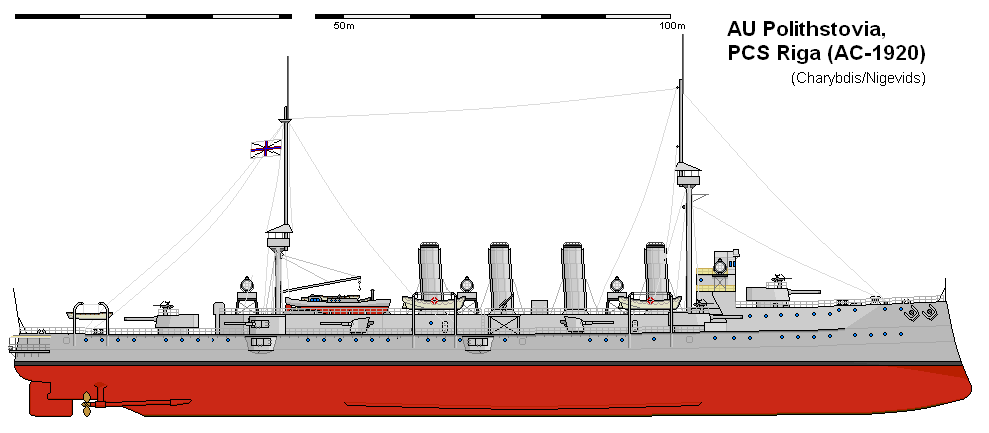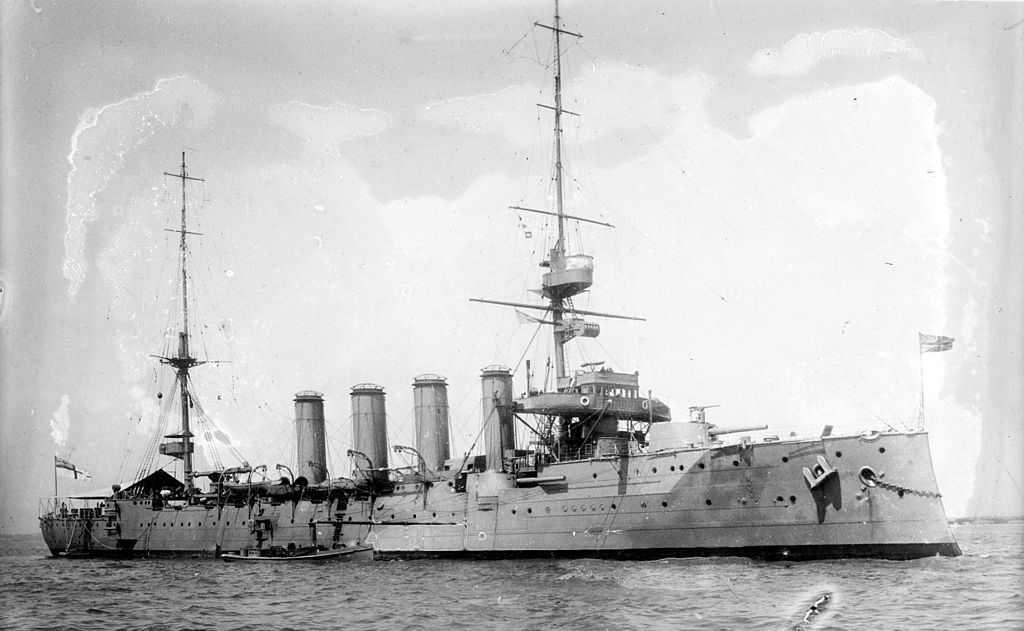
PCS Riga (AC-1920 (T/S-1939))
Return to Polithstovian Navy Page:
The Riga class cruisers were part of the free set up vessels transferred from the British Commonwealth Navies. The three ex-Devonshire class Armoured Cruisers were only fifteen years old when transferred and were the first ships to arrive for the new Polithstovia Commonwealth Navy. These Armoured Cruisers were used right from the outset to train the personnel that would be required to man the start up navy ships and beyond.

The Riga class arrived with their WW1 advances from the original configuration. The lower deck mounted 6" guns in casemates had proved useless in any sort of seaway and were removed and resited to the upper deck. The single 12 pounder guns mounted on the turrets were removed in 1917 and replaced with 2 pounder anti-aircraft guns. A pair of 3" anti-aircraft guns were added in 1918.
The ships retained their triple expansion reciprocating engines throughout their lifetimes and were kept as coal fired boiler systems. The three ships were named after their ports of service. The ships retained their main armament but one pair of 6" guns were removed and replaced with a pair of 4" anti-aircraft guns. The 3" AA guns were replaced with a pair of 40mm AA weapons, while the 2 pounder guns were replaced with 20mm cannons. The drawing above shows the three units as they were in 1939.
In August 1939 the fleet was gathered together at Gdansk, ostensibly for the 20th anniversary of Nation Day for Polithstovia. The real reason was to send the fleet through the Oresund and out of the Baltic to Britain to escape the fleet falling into German hands. The fleet speed for the escape was to be 18 knots which would have been fine for these ships which had made over 22 knots when new. But the years of service had proved hard on the ships which could barely make 19-20 knots on a good day. At 18 knots they provided a smokescreen whether wanted or not. The Riga and Tallin made it to Britain but the Gdansk suffered engine problems while still in the Baltic and was "accidentally" sunk by Stuka divebombers. If the Germanic States could not have them for their use they would rather have them sunk. In the international waters of the Kattegat the fleet met a British Battle Squadron and were escorted to Britain without further losses.
| Displacement | 10,500 tons std 13,400 tons full load | |
| Length | 475 ft | |
| Breadth | 68.5 ft | |
| Draught | 25 ft | |
| Machinery | 2 shaft steam reciprocating engines, 21,000shp | |
| Speed | 22.5 knots | |
| Range | 7000 miles at 10 knots | |
| Armour | 6" side, 2" deck, 5" turrets. | |
| Armament | Original 4 x 7.5" (4x1) 6 x 6" (6x1) 2 x 3" AA (2x1) 4 x 2pd AA (4x1)
|
As Training Ship 4 x 7.5" (4x1) 4 x 6" (4x1) 2 x 4" (2x1) 2 x 40mm (2x1) 12 x 20mm (12x1) |
| Complement | 650 | |
| Notes | PCS Riga (ex HMS Carnarvon 05/1905) PCS Tallin (ex HMS Roxburgh 09/1905) PCS Gdansk (ex HMS Antrim 06/1905) SUNK 20th August 1939 |
|

HMS Antrim in 1912 with casemate guns still in place.